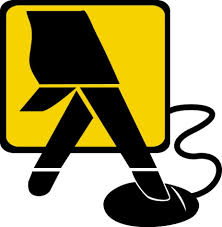Categories: Management
By Mark Tomalonis
Principal, WarehouseTWO, LLC
.jpg) *WFH: "working from home"
*WFH: "working from home"
Even during this extraordinarily challenging business climate, your company ought to be identifying and grooming future employees. Recent high school or college graduates need experience. An effective way to address both issues is via hiring summer interns.
Rather than have them do work normally assigned to full-time employees, assign one-time projects to them. The benefits are that they will feel a sense of accomplishment during their brief internship, and you will get something valuable done that your full-time employees may not have had time to get to.
Here are two perspectives on hiring summer interns:
Taken from our archives of past annual lists of summer intern projects, here are five good projects for summer interns that can be done while working from home.
 How well is your company adapting to changes in the workplace due to the pandemic? Your employees would know. Ask them. One of our favorite employee surveys is the “Start-Stop-Continue” survey, in which all employees are asked to respond to these three questions:
How well is your company adapting to changes in the workplace due to the pandemic? Your employees would know. Ask them. One of our favorite employee surveys is the “Start-Stop-Continue” survey, in which all employees are asked to respond to these three questions:
For easy survey implementation, we like these on-line tools: Constant Contact and SurveyMonkey.
 When was the last time you polled your customers for feedback? Perhaps they too are struggling with business challenges due to the pandemic. A customer survey is a good way to determine how well your company is meeting their changing needs. If you have never conducted a customer survey before, do it this summer. For starters, consider a “Start-Stop-Continue” survey described above. Or resurrect questions from a previously conducted survey. Or find good customer survey questions on-line. Be bold: conduct a phone survey, to get more responses from customers.
When was the last time you polled your customers for feedback? Perhaps they too are struggling with business challenges due to the pandemic. A customer survey is a good way to determine how well your company is meeting their changing needs. If you have never conducted a customer survey before, do it this summer. For starters, consider a “Start-Stop-Continue” survey described above. Or resurrect questions from a previously conducted survey. Or find good customer survey questions on-line. Be bold: conduct a phone survey, to get more responses from customers.
 By now, your company probably has its own LinkedIn listing (and perhaps its own Facebook page), which you have complete control over. But don't ignore your listings in independent on-line business directories, such as Manta, YellowPages.com and Yelp? (Yes, Yelp. It's not just for restaurants and dry cleaners anymore.) Click here for a list of thirty-two business directory sites where you ought to consider creating/reviewing/updating your company information. (Granted, not all sites on this list are business-to-business, "B2B" sites.) Have your intern create an account for access to selected on-line business directories and submit accurate, rich content.
By now, your company probably has its own LinkedIn listing (and perhaps its own Facebook page), which you have complete control over. But don't ignore your listings in independent on-line business directories, such as Manta, YellowPages.com and Yelp? (Yes, Yelp. It's not just for restaurants and dry cleaners anymore.) Click here for a list of thirty-two business directory sites where you ought to consider creating/reviewing/updating your company information. (Granted, not all sites on this list are business-to-business, "B2B" sites.) Have your intern create an account for access to selected on-line business directories and submit accurate, rich content.
Here is another tip for improving your on-line presence: Search at Google for your company name plus the word, “review”. Are there any on-line reviews about your company? Are there any negative ones? If so, contact the review posting site and determine how to defuse/resolve the negative review.
Entropy: lack of order or predictability; gradual decline into disorder.
Entropy: why your teenager's bedroom is the way it is.
Entropy: what causes databases touched by multiple people to get less and less accurate.
 Given enough time, the part number database in your company’s ERP system gets messier and messier. Whether you are offering your items for sale to end-customers via your company’s e-commerce site or to peer wholesaler-distributors via WarehouseTWO, you are exposing to the outside world content that traditionally has been hidden in your ERP system. This now-revealed data might be messy. Bad part numbers in your ERP system can cause problems because the part number field is how you identify the item when buying from your supplier and selling to your customer. (For branded products with a single supplier, your part number should be the manufacturer’s EXACT part number. Click here to learn why.) By exporting each manufacturer's list of part numbers from your ERP system to an Excel file and by providing a set of manufacturer's literature and a price list, you can have an intern review and propose corrections to each vendor's item data set in your ERP. And because of entropy, we think that this should be an annual intern project.
Given enough time, the part number database in your company’s ERP system gets messier and messier. Whether you are offering your items for sale to end-customers via your company’s e-commerce site or to peer wholesaler-distributors via WarehouseTWO, you are exposing to the outside world content that traditionally has been hidden in your ERP system. This now-revealed data might be messy. Bad part numbers in your ERP system can cause problems because the part number field is how you identify the item when buying from your supplier and selling to your customer. (For branded products with a single supplier, your part number should be the manufacturer’s EXACT part number. Click here to learn why.) By exporting each manufacturer's list of part numbers from your ERP system to an Excel file and by providing a set of manufacturer's literature and a price list, you can have an intern review and propose corrections to each vendor's item data set in your ERP. And because of entropy, we think that this should be an annual intern project.
And what about your item descriptions? Here are suggested steps on how to create and manage uniform item descriptions. Using literature available from the items' manufacturer, and with just a little training, an intern without prior knowledge of the product line should be able to handle this project.
 On-line promotion takes many forms. One of them is publishing brief articles ("Posts") at LinkedIn. LinkedIn is the leading "social media" site for business-to-business communications. Creating and serving up high quality content about your company and the products/services that you offer should be part of your formal on-line marketing efforts. Making those posts effective depends on increasing their audience. This is where an intern can help. Provide a list of existing and potential clients (company names and contact names) to an intern and have him/her log into your sales people's LinkedIn accounts or your company's LinkedIn account and invite these contacts to "connect".
On-line promotion takes many forms. One of them is publishing brief articles ("Posts") at LinkedIn. LinkedIn is the leading "social media" site for business-to-business communications. Creating and serving up high quality content about your company and the products/services that you offer should be part of your formal on-line marketing efforts. Making those posts effective depends on increasing their audience. This is where an intern can help. Provide a list of existing and potential clients (company names and contact names) to an intern and have him/her log into your sales people's LinkedIn accounts or your company's LinkedIn account and invite these contacts to "connect".
For guidance on this project, consider these two articles:
About the Author After a successful career in sales and operations management in the wholesale-distribution industry, Mark Tomalonis is now principal of WarehouseTWO, LLC. He amuses himself by writing articles, such as this one, to help wholesaler-distributors execute their operations better. Mark’s articles and tips are published in WarehouseTWO’s monthly e-newsletters. Click here to subscribe.
After a successful career in sales and operations management in the wholesale-distribution industry, Mark Tomalonis is now principal of WarehouseTWO, LLC. He amuses himself by writing articles, such as this one, to help wholesaler-distributors execute their operations better. Mark’s articles and tips are published in WarehouseTWO’s monthly e-newsletters. Click here to subscribe.
About WarehouseTWO
WarehouseTWO, LLC is an independent “inventory-sharing” service created exclusively for durable goods manufacturers and their authorized distributors, and for any group of durable goods “peer” wholesaler-distributors, such as members of a buying/marketing group or cooperative. To learn how inventory-sharing with WarehouseTWO can help your business, visit the WarehouseTWO website, or email info@warehousetwo.com.